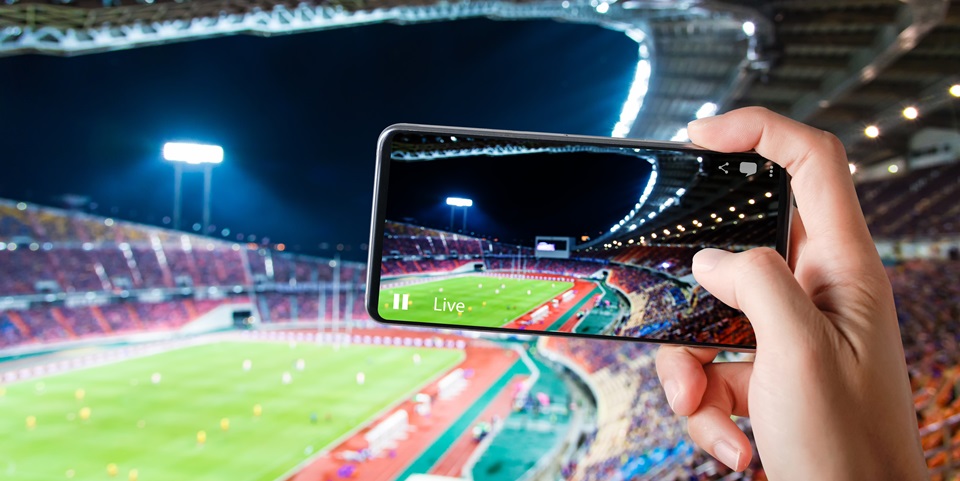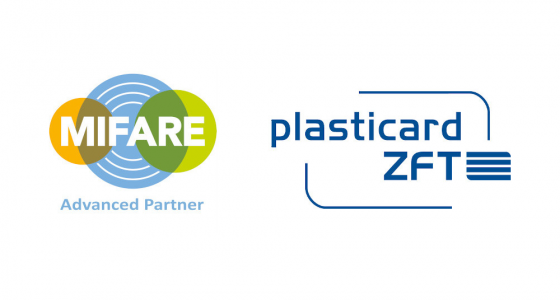Connectivity Redefines the Live Game-Day Experience 18. April 2018

Venues for sporting events are facing some serious competition these days – from the couch. The average sports fan has lots of reasons to stay home, what with high-definition TV coverage, split-screen viewing, and a smartphone for real-time stats and updates, so why make the effort to be there in person? Besides, attending a live event often means sitting in traffic, struggling to find a place to park, waiting in lines (to enter, buy refreshments, use the restroom), and then rushing to leave before getting caught in home-bound traffic. Taken as a whole, the couch can seem pretty appealing.
Sports teams want full attendance at games, but stadium owners have added reason to make their venues more inviting. To maximize revenue when the resident sports team is on the road or in the off season, stadiums are being used to host other events, such as concerts and short-term sporting events, including multiplayer videogame competitions, or eSports, which let spectators cheer on their favorite professional gamers. In recent years, eSports has become big business, with tens of thousands of fans attending live competitions and millions more watching them online. According to a PriceWaterhouseCoopers report on eSports, the 2016 League of Legends World Championship Finals, for example, attracted 43 million spectators, while Game 7 in the NBA finals attracted only 31 million. Stadiums can be eager to get into the action and host an event.
To make the live game-day experience more enticing, and attract more people to sporting venues, professional teams, athletic clubs, event promoters, and stadium architects are using technology to enhance the fan experience before, during, and after their attendance. The result is bigger in-stadium audiences, a broader fan base, and stronger sponsor involvement.
The “Always On” Connected Fan
Many of today’s most enthusiastic sports fans are fully digital, running their lives on smart, connected devices that are always on. These “digital natives” want to use their devices as part of their experience, and form many of their decisions based on the quality of digital offerings. They’re looking for unified technology, with smooth transitions and personalization across every aspect of their fan interaction, from text, data, and video in social media to ticketing, entry, merchandising, and game-day purchases. Many of today’s existing stadiums and arenas are being retrofitted with WiFi and cellular, and dozens of soon-to-be-finished venues will use an extensive technology infrastructure to ensure fans can get online.
Leveraging Data with the IoT
Along with online connectivity, the Internet of Things (IoT) can enhance the in-stadium experience, too. Sensors, placed in an athlete’s show or boot, can connect to the stadium’s WiFi network or a low-powered cellular phone transmitter so teams and TV personnel can use the data. Data can be shared with attendees, so fans can have the same kinds of insights as coaches, owners, and broadcaster.
The IoT can create a smarter building, too, bringing benefits to public safety, security, and the fan experience. Real-time data, gathered from sensors posted at key points, can help fans navigate the arena more safely and more efficiently, and can help ease congestion, whether it’s at the entry point, the souvenir stall, or outside restrooms.
The MIFARE® Advantage
NXP Semiconductor’s MIFARE contactless IC portfolio, with its support for a variety of features, including Near Field Communication, is an important part of this new, data-rich fan experience. MIFARE ICs let fans use their smartphones as entry tickets and payment cards, and support unique interactions with their favorite teams and players. At the same time, contactless gives stadium operators and sports teams a new way to personalize services and engage with fans.
Before the Game
- Contactless technology is easy to integrate into everyday objects, so tickets can take the form of smart cards, wristbands, smart paper tickets, and souvenir items. Fans can buy contactless tickets online and download electronic versions to their smartphones, so the smartphone itself becomes the ticket. Either way, contactless tickets work with smartphone apps that offer notifications, directions to the stadium, maps for navigating the building, restaurant menus, discounts on beverages, and so on. Ticketholders can plan their in-stadium activities ahead of time and view special content just for them.
During the Game
- When fans arrive at the stadium, the contactless ticket can offer hassle-free access to parking areas. Entering the stadium is quick and easy, since a simple tap is all that’s needed to validate the ticket. Contactless technology can be used to quickly and securely pay for any in-stadium purchases, so there are fewer lines at food kiosks and souvenir stores. Purchases can also be linked to loyalty programs, with earned points immediately being credited to a phone app. Season ticket holders and VIPs can use their contactless tickets for extra benefits, like access to special hospitality lounges or opportunities to meet players. Receiving special insights and notifications, based on real-time data, gives ticketholders a sense of belonging, and being more in control of their live game-day experience, even in a stadium filled to capacity.
After the Game
- Once the event is over, ticketholders can gain access to special online content. Tapping a ticket to a smartphone or using an eTicket to launch an app leads to highlights of the attended game, special offers, discounts for merchandise associated with the match, or access to tickets for upcoming events.
Personalized Experiences
Contactless technology gives teams the opportunity to see their fans more holistically, and deliver experiences that are more personal and more memorable. Every game-day interaction, be it with an app, social media, a ticket, or a payment, lets teams and clubs know things like where fans like to sit, what they like to eat, which videos they prefer, who their favorite players are, and so on. The data trail makes it possible to tailor recommendations, discounts, and content, based on personal preferences. Each fan’s relationship with the team becomes deeper, and more valuable.
The data-rich stadium environment also lets team owners and venue operators predict certain behavioral patterns – such as which entry points or kiosks are busiest and when – so they can optimize services to accommodate trends. The in-stadium experience improves over time, based on actual fan behavior.
Exclusive, Interactive Merchandise
Outside the stadium, contactless technology is making merchandise more valuable to fans, too. For example, the NBA partnered with Nike and now offers player jerseys that include an NFC tag. The jersey provides a link between the real world and the digital world. By tapping a smartphone to the player jersey’s tag, fans can access exclusive content, including curated highlights, the player’s favorite music playlists, chances to win courtside tickets, the ability to unlock boosts for NBA video games, and early access to exclusive products.
Even official items, including game-day equipment, can benefit from contactless technology. Match balls, for instance, are valuable souvenirs and sold to fans after the event. In the lead-up to the 2018 FIFA World Cup Adidas introduced the Telstar 18, an official match ball embedded with an NFC chip. The NFC chip lets the ball verify its own authenticity and provides access to exclusive content such as video highlights of winning shots using the ball.
Conclusion
As sports continue to converge with entertainment, stadiums are becoming entertainment centers that use technology to give attendees a unique experience. At the same time, stadiums are using technology, especially in the form of wireless connectivity and the IoT, to better understand who their fans are and engage with them more effectively. In particular, Near Field Communication and NXP’s MIFARE ICs make going to the stadium more fun, more engaging, and more personal. In combination, these two let sports teams and stadiums deliver experiences that fans simply can’t recreate at home. That way fans get more from their attendance, and find more ways to enjoy the adventure of being there in person.
Related Links







